Harrell releases bold two-pronged climate plan to reduce emissions and ensure climate resiliency and environmental justice
“The urgency of the climate crisis requires strong leadership at every level of government, committed to following the science, and meeting critical targets for carbon reduction,” said Eric Salathé, Central Area resident and PhD Climate Scientist. “Bruce Harrell has articulated a vision for climate action that is both ambitious and attainable, with a commitment to equity and transition that will leave no one behind.”
Seattle – Today, candidate for Seattle Mayor Bruce Harrell released his extensive “Emerald City” plan for the City of Seattle to take significant local action to defeat the climate crisis. Through both immediate and long-term action, Harrell presents a vision of a city at the forefront of climate response – decreasing emissions, strengthening climate resilience, building a local clean energy economy, and centering environmental justice throughout.
“Seattle must set a national example for climate action – no excuses,” said Harrell. “As a lifelong Seattleite, I’ve watched over 60 years as our environment and weather patterns have changed. Now, we’re all experiencing a preview of the future if we don’t act – extreme heatwaves, extensive flooding, smoke-filled skies. This is not the future my children and grandchildren deserve – we must act.”
“I was proud to help pass Seattle’s first Climate Action Plan and Seattle’s Green New Deal – but the City has consistently failed to meet the goals and expectations set by our own policies and by the climate scientists who know best,” said Harrell. “Under my leadership, you’ll see a new sense of urgency and a new level of engagement – climate will no longer be ignored on the backburner – we will create jobs, improve parks, ensure equity, and drive change. Seattle has always been a forward-looking city, and I know with the needed resources, innovative thinking, and united effort, we will triumph with innovation over apprehension and progress above peril, securing an Emerald City for generations to come.”
Harrell’s comprehensive 7-page plan contains ambitious ideas, thoughtful frameworks, and specific details for new projects, policies, and programs. Informed by input from climate scientists, environmental policy leaders, youth and members of the climate justice community, Harrell calls for acting urgently to reduce Seattle’s greenhouse gas emissions, ensuring an accelerated pace to reach carbon neutrality goals and bolster the development of a localized clean energy economy.
To reduce climate pollution, Harrell calls for:
-
- Developing a localized clean energy economy through new, green, union jobs in energy, transportation, and construction and retrofitting – with a just transition for current workers, strong labor standards via a Green Jobs Bill of Rights, and equitable apprenticeship and youth jobs programs linked to his Seattle Job Center Proposal.
- Establishing truly 100% Clean Buildings – by ending the use of natural gas in new construction, replacing aging gas systems in existing homes and buildings with clean electricity with subsidies and deliverables for new heat pump installation, and expanding adoption and accessibility of rooftop solar, especially for low-income communities.
- Better connecting neighborhoods with climate forward transportation, housing, and land use planning. Harrell will fight for increased public transit, including continued mass transit expansion; support the continued development of dense vibrant communities with increased housing and walkable, bikeable neighborhoods; and push for greater mixed use opportunities through updating building codes and rethinking street use to establish more non-motorized roadways for pedestrians and cyclists.
- Preserving and investing in Seattle’s world-class parks, protecting p-patches and encouraging community gardening, conserving and expanding our tree canopy – especially in areas where “heat sinks” and lack of greenery threaten localized and unjust impacts. We must also expand access to green spaces in underserved and historically marginalized communities.
- Divesting from Fossil Fuels, moving adjacent industries out of the city’s investment portfolio, as Harrell previously called for on the City Council. Harrell will lobby the Seattle City Employees’ Retirement System with renewed urgency for necessary change to protect both the planet and employee pensions.
- Recruiting and elevating scientists, climate specialists, environmental justice advocates, and tribal leaders. Harrell will make it a priority to hire the best experts on the issue of climate change, follow best practices, and highlight the issue’s visibility as a top priority of the city.
The summer’s record heat waves led to hundreds of deaths across the Pacific Northwest, yet another tragic impact of climate change and continued proof of the disproportionate impact this crisis will put on the most vulnerable – seniors, low-income residents, communities of color, and more. Further, growing up in the redlined Central District, Harrell has drawn on his own experience with environmental racism vowing to ensure environmental justice, clean up existing pollution, and ensure a city where all have healthy access to parks and the environment.
To strengthen climate resilience and ensure environmental justice, Harrell plans to as Mayor:
-
- Build and rebuild with climate resilience as a focus, taking into account the increased risk of urban flooding, heatwaves, and other environmental threats. Under his proposed Race and Data Initiative, Harrell will include measures modeled on the state’s 2021 HEAL Act, using environmental mapping and a climate justice lens to identify inequitable exposure and invest in the most vulnerable communities. Specific focuses include comparing climate factors like pollution exposure, tree canopy percentages, accessible park locations, rates of pollution-enhanced diseases like asthma, with maps of neighborhood demographics like race, income, food security, and healthcare access.
- Preserve Open Spaces and Tree Cover to moderate the impacts of climate change. Natural vegetation has numerous benefits to the environment, including natural cooling effects, heavy rain absorption, and air quality improvement – key defenses against heat, flooding, and smoke. Harrell will support stronger tree protection measures and again ensure historically redlined and disadvantaged neighborhoods also have robust canopies.
- Improve Seattle’s infrastructure across the board to reduce climate vulnerability, for immediate and long term needs. Investments will include the mundane such as storm water and sewer systems, the electricity grid, and the shoreline. Harrell will also implement robust emergency response options, through community centers and public spaces to quickly address the needs of vulnerable citizens to extreme heat and smoke exposure, as well as early warning systems to provide practical guidance and accessible resources to vulnerable neighborhoods before extreme events occur.
“Climate change is here and it is now,” said Harrell. “However, we will not allow a dire pessimism to rule the day. From crisis rises opportunity – and as your Mayor, I will bring the city together around a shared vision to defeat climate change and ensure a healthy environment and a more equitable city for all.”
Federal and state leaders and experts in climate policy and science praised Harrell’s approach:
“Our urgent work to invest in green infrastructure, expand clean transit, and advance environmental justice requires local partners with the commitment to coordinated action,” said U.S. Representative Marilyn Strickland (D-WA), a member of the House Transportation and Infrastructure Committee, House Sustainable Energy and Environment Coalition, and co-chair of the Puget Sound Recovery Caucus. “Bruce Harrell is the best choice for real climate action, creating green jobs, and helping all communities thrive.”
“Washington has the strongest state climate action plan in the nation to meet Paris Agreement emission reduction targets,” said State Senator Reuven Carlyle, Chair of the State Senate Environment & Energy Committee. “Gov. Inslee and I have worked hard to pass sweeping climate legislation for 100% clean energy, a clean fuel standard, building efficiency, environmental justice and equity and bold carbon pricing. We need Seattle as a partner in this historic work. We can’t meet our goals without strong city leadership and Bruce Harrell’s plan can be a key part of our climate action and success. As a lead sponsor of our state’s climate agenda, I’m proud to stand with Bruce Harrell for climate action.”
“The urgency of the climate crisis requires strong leadership at every level of government, committed to following the science, and meeting critical targets for carbon reduction,” said Eric Salathé, Central Area resident and PhD Climate Scientist. “Bruce Harrell has articulated a vision for climate action that is both ambitious and attainable, with a commitment to equity and transition that will leave no one behind.”
“The climate crisis is the defining issue of our lifetimes, and we need a Mayor committed to making sure Seattle is a leader for the urgent work needed in our city, in King County, in Washington, and across the nation,” said Ken Lederman, a leading state conservation leader and environmental attorney. “We need Bruce’s leadership and commitment to collaboration to help reach carbon reduction goals, to provide true climate justice for the most impacted communities, and to prepare our city for the future.”
Learn more and read Harrell’s full plan at BruceForSeattle.com.







